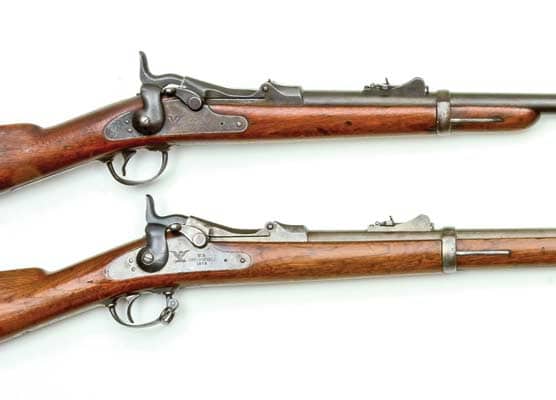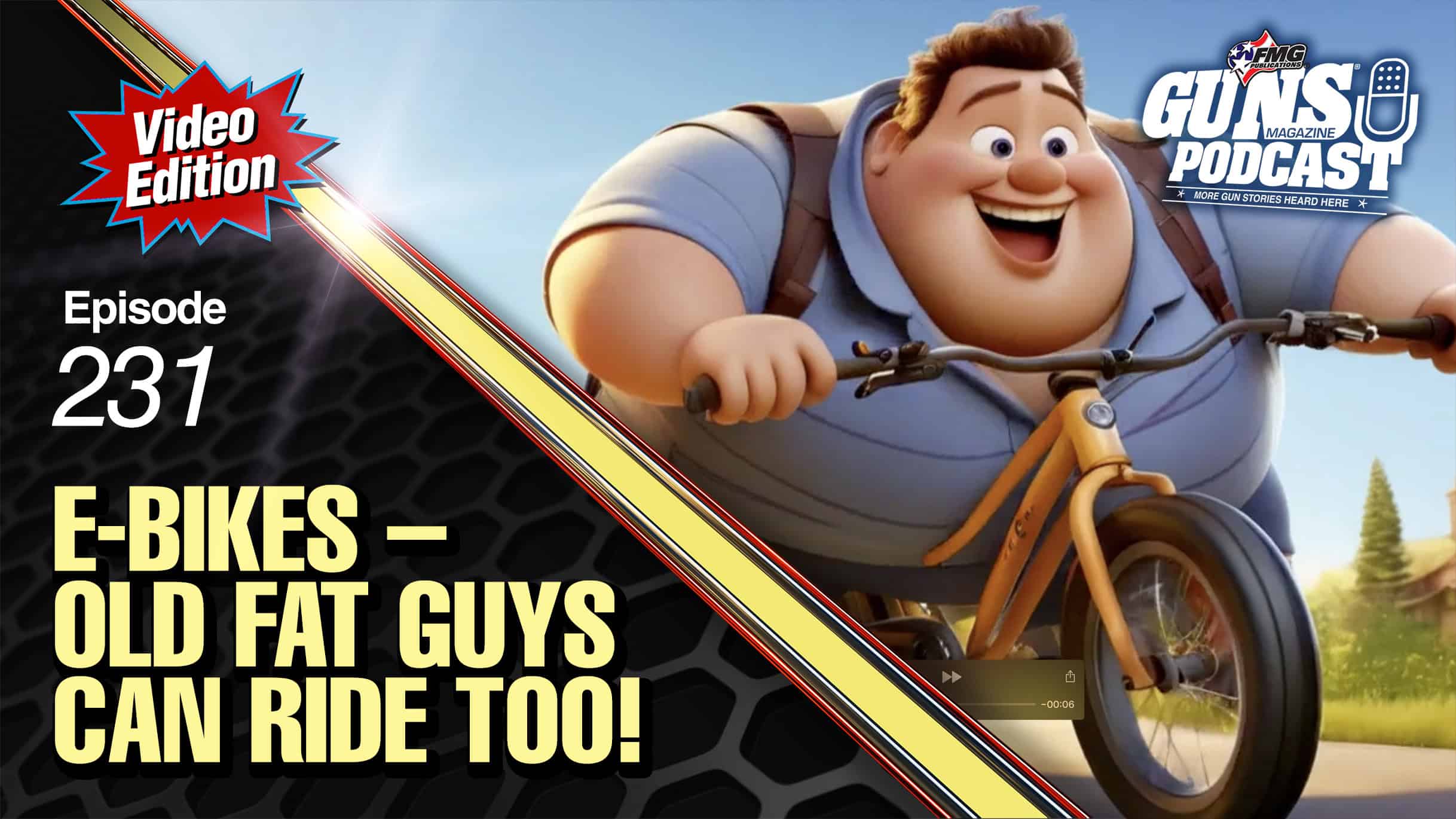| GUNS Insider |
0
By Payton Miller
Finding the best-performing .22 Long Rifle load for a specific gun can be as surprising as it can be exhaustive. Back when rimfire ammo was considerably cheaper and easier to find in quantity, the best advice was pretty cut and dried. And it still holds. It goes something like this: “Get a box of every brand and type of .22 LR you can lay hands on. Group them all and go with what shoots the tightest.”
And you’ve also got to take into consideration what you’re using it for. A varmint hunter is likely to want a high or hyper-velocity HP, whereas a squirrel or rabbit hunter is probably going to be more concerned with meat damage.
Of course, with a rich array of brands, it also makes sense not only to pick what was most accurate in your particular rifle, but to remember what “runner-up” loads most closely duplicated “the winner” in actual point of impact as well as group size. This makes even more sense today, when you can’t guarantee being able to find—or rat-hole—enough of your cherry-picked No. 1 stuff to put your mind at ease.
And, yes, this winnowing-out process can be surprising. Sometimes the best .22 LR load for a given rifle won’t be what you think it oughta be. Case in point:
About 12 years ago, a buddy of mine’s daughter got interested in 50-foot competitive smallbore rifle shooting. So he bought her a very nice Anschutz Model 1451—globe sights, serious sling, the whole nine yards. We took it out to the range, along with a GI ammo can full of—literally—every type of .22 LR we could scrounge up. It was mainly standard velocity, of course (this was not a hunting rig), but there was high-velocity and even hyper-velocity stuff as well.
With the S&W MP15-22, point of impact from Winchester T-22 Match (above, left)
was very close to Winchester Power-Point (above, right), an excellent small game
load. Knowing this makes a quick switchover possible in the field (right).
In short, we had everything from Eley Rifle Match, Lapua Match, Winchester Supreme Match and CCI Green Tag through Winchester Power Point, Remington Mohawk, CCI Stingers, Remington Yellowjackets and a potpourri of brands and exotic names I can’t even remember. At 25 yards we shot ’em all. Sandbagged, 5-shot groups. The winner? PMC Sidewinder. This relatively economical high-speed number literally put ’em all in one semi-distorted hole at 25. Now, you’d have thought this little thoroughbred of a rifle would have preferred some of the (at the time) six-buck-a box Eley or Lapua match stuff instead of a modestly-priced plinking/varmint item. Nope.
Turns out, of course, a lot of this was mere hairsplitting. That Anschutz shot most everything good enough for her to do well in matches with whatever ammo her coaches had on hand for the kids. But it was, to say the least, surprising. But it really shouldn’t have been.
There’s a whole lot of voodoo involved in why one .22 will print best with a certain load. I’m sure there’s a scientific explanation somewhere. But I’m equally sure I couldn’t understand it on the chance someone could come up with one. Although it’s probably a safe bet your standard velocity, high-end match stuff—usually by virtue of consistent velocity and hand-inspected uniformity—is going to do better overall in any “taste test” using several rifles (and probably competition-grade ones at that).
For an adjustable sighted—or scoped—.22 the process can be fairly involved. Lots of time, lots of ammo, lots of patience required. I can remember things being simpler. Once I decided to give the treatment to a tiny little Winchester Model 58, a Depression-era single-shot with a gumwood stock and fixed open sights. The challenge then was simply finding something to manage a happy union between point of aim and point of impact at 25 yards. Fortunately, the little rifle shot most everything tight enough, so it was just a matter of finding one magic brand (plus a few close-running alternates). The magic number turned out to be Winchester Power-Point, which perfectly suited the small-game role the little bolt action was designed for.
The rudimentary fixed sights on this Depression-era Winchester Model 58 simplify
the search for the “right” load. Once you find something that brings point-of-aim
and point-of-impact together—and delivers acceptable groups— you’ve found it!
In this case, all three of these brands did the trick.
Standard, high or hyper-velocity. Old, new or out-of-print. To find the perfect
match for your .22, there’s simply no way around trying as many Long Rifle brands
as you can.
Dealing with .22 autoloaders, brings functional reliability into the mix—will the load run the gun as well as give the accuracy you want? Often it’s not as simple as simply using high-speed ammo, or opting for a 40-grain bullet instead of a 29-grain “hypervelocity” one.
I wanted to revisit the ammo selection process with a current rimfire autoloader, one as far away from what I was used to as I could find. I used Smith & Wesson’s M&P15-22, a cool little blowback “AR lookalike” featuring a 16-1/2-inch barrel, polymer upper and lower, and removable aperture sights on the Picatinny rail.
Of course I could have put any type of optic I wanted on the rail, but since I was going to be shooting at 25 yards with a variety of ammo, I figured the aperture would be fine. And it was—easy to adjust, positive and repeatable. The 6-pound single-stage trigger broke clean as a whistle, by the way. No, not as light as that long-ago Anschutz, but the little S&W has a curb weight of 5 pounds and is not nearly as “mission specific.” The only time I managed to embarrass myself was in mistaking one of the ears protecting the front sight blade with the blade itself. This resulted in a “called flyer,” which flew off to parts unknown.
Besides being able to accept most aftermarket bells and whistles as a “real AR,”
the S&W M&P15-22 is an excellent, reliable rimfire in its own right.
The M&P15-22 was democratic in its likes. Remington’s economy Mohawk brand (left)
produced results fairly close to Eley’s super-pricey Tenex (right).
Oh, on the question of “function with everything” reliability with an autoloader? No worries. The stuff I ran with the M&P15-22 ranged from standard velocity match grade to high velocity HP’s to light-bullet (32-grain) hyper-velocity Stingers (see chart). I didn’t experience anything resembling a malfunction. The winners in terms of accuracy? An unlikely tie between “pricey” Eley Tenex (now running around 25 bucks a box) and “price-brand” Remington Mohawk—long out of production, but probably approximated pretty closely by the company’s current Cyclone or Thunderbolt brands.
I guess the lesson is the same now as it’s always been. You gotta shoot ’em all and see.
Shooting Facilities provided by: Angeles Shooting Ranges, 12651 Little Tujunga Rd., Lakeview Terrace, CA 91342, (818) 899-2255 www.angelesranges.com.
Click Here To See Performance Charts
M&P15-22
Maker: Smith & Wesson
2100 Roosevelt Ave.
Springfield, MA 01104
(800) 331-0852
https://gunsmagazine.com/company/smith-wesson/
Action: Blowback semi-auto, Caliber: .22 Long Rifle
Capacity: 10 (detachable box magazine)
Barrel length: 16-1/2 inches
Overall length: 33-3/4 inches
Weight: 5 pounds
Material: Polymer upper and lower, carbon steel barrel
Finish: Matte black (other options available)
Stock: 6 position CAR-type
Sights: Adjustable dual aperture rear, A2 post front (Picatinny rail for optics)
Price: $519
Read More Guns Insider Articles
Download A PDF Of The GUNS Magazine December 2015 Issue Now!


